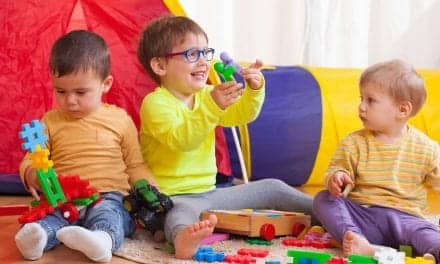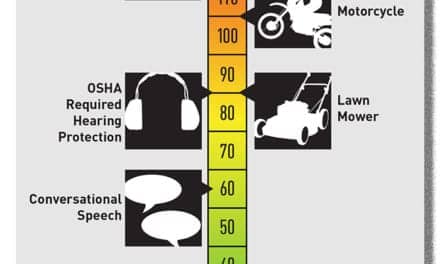Cell biologist Benjamin J. Perrin of the School of Science at Indiana University-Purdue University Indianapolis (IUPUI) is advancing knowledge of age-related hearing loss with the goal of informing possible therapeutic cell-regeneration approaches to the often-debilitating problem, the school announced on its website. Perrin’s work is supported by a new $1.9 million, five-year grant from the National Institute on Deafness and Other Communication Disorders (NIDCD).

Assistant Professor of Biology Benjamin J. Perrin, PhD (R) and graduate student Pallabi Roy, MS (L) look at an image of auditory sensory hair cells in the Perrin lab in the School of Science at IUPUI.
Almost everyone experiences at least some degree of hearing loss as they age, with the greatest loss typically occurring between ages 60 and 69.
Perrin is tackling the problem at the cellular level by exploring the function of the portion of the sensory cells in the inner ear that are responsible for detecting sound waves. These bundles of rod-like protrusions, called stereocilia, bend as sound hits them, opening ion channels. When stereocilia work properly, they convert sound waves into electric signals that are transmitted to the body’s neurons, thus enabling one to hear speech, music, and other sound.
Stereocilia may be abnormal at birth; they deteriorate as we age; and they can be damaged or destroyed by disease, toxins, or loud noises. They do not grow back; hearing loss occurs if stereocilia malfunction or degenerate.
“To successfully convert sound waves into electric signals that can be understood by neurons, the stereocilia have to be exactly the right shape, size, and conformation,” Perrin said. “We are studying the dynamics and stability of how proteins move in and out of stereocilia to gain a better understanding of how these micromachines maintain themselves over long periods of time.”
“If you want to try to regenerate stereocilia, you have to know how these living machines work in the first place,” said Perrin. “With this knowledge, it may be possible in the future to regenerate them to prevent or restore hearing loss. We are hoping to solve a biological puzzle with implications for millions of people.”
Perrin envisions the development of a maintenance-of-living-cells approach—remodeling or regrowing a tiny piece of the cell before the whole cell is dead—rather than totally replacing them.
Each semester, three IUPUI graduate students and two to five undergraduates will work on the project under Perrin’s tutelage, conducting sophisticated experiments on mouse sensory cells, which are very similar to human sensory cells, and analyzing the data obtained from those experiments.
Cytoskeletal Stability in Stereocilia Maintenance is supported by NIDCD grant R01DC015495-01A1.
Source: IUPUI
Image: IUIPI





